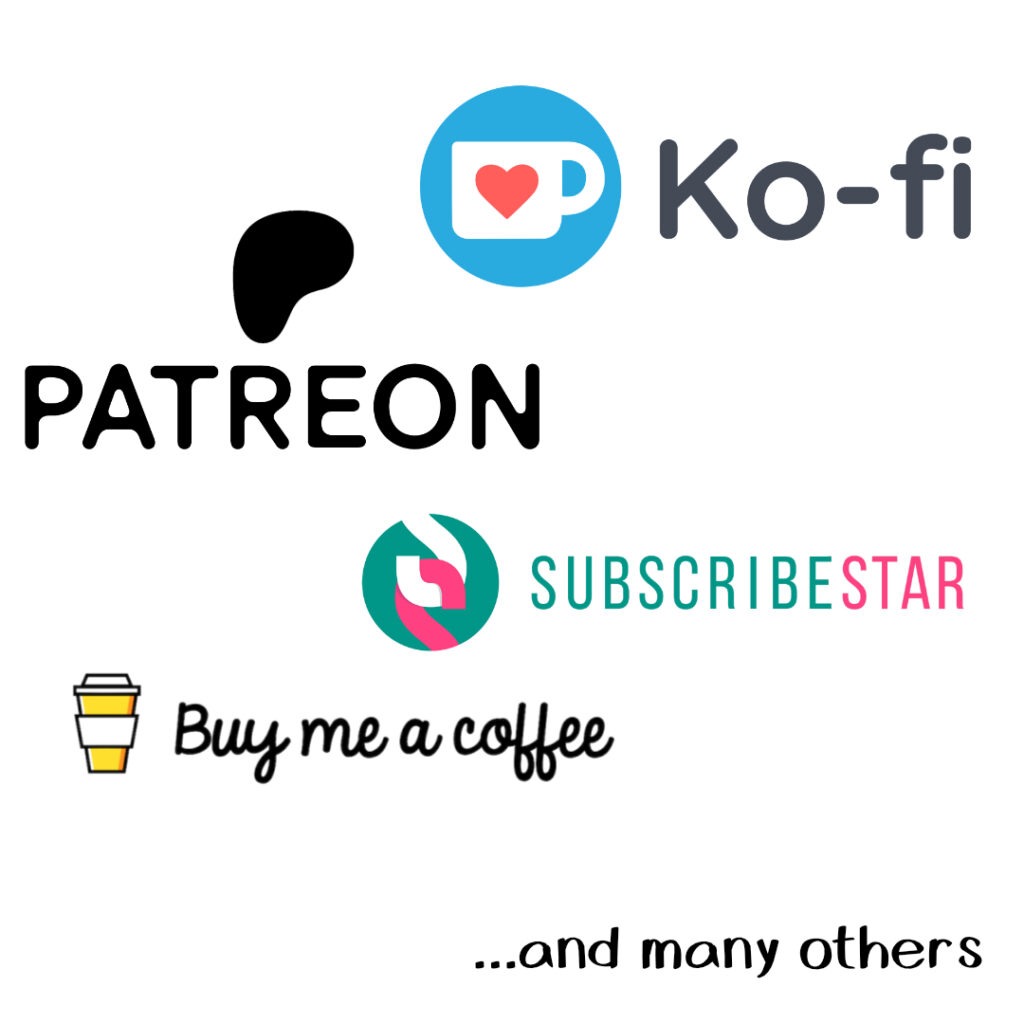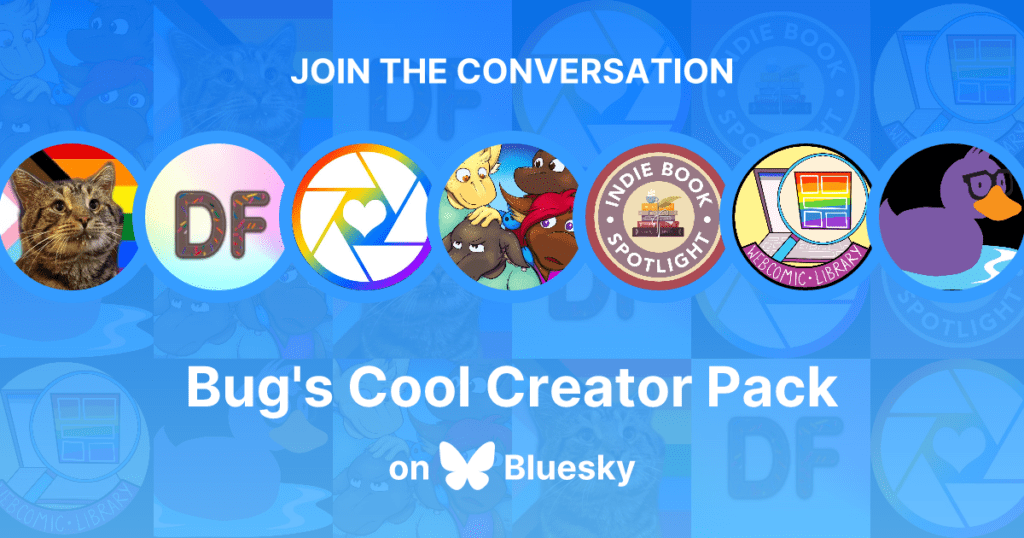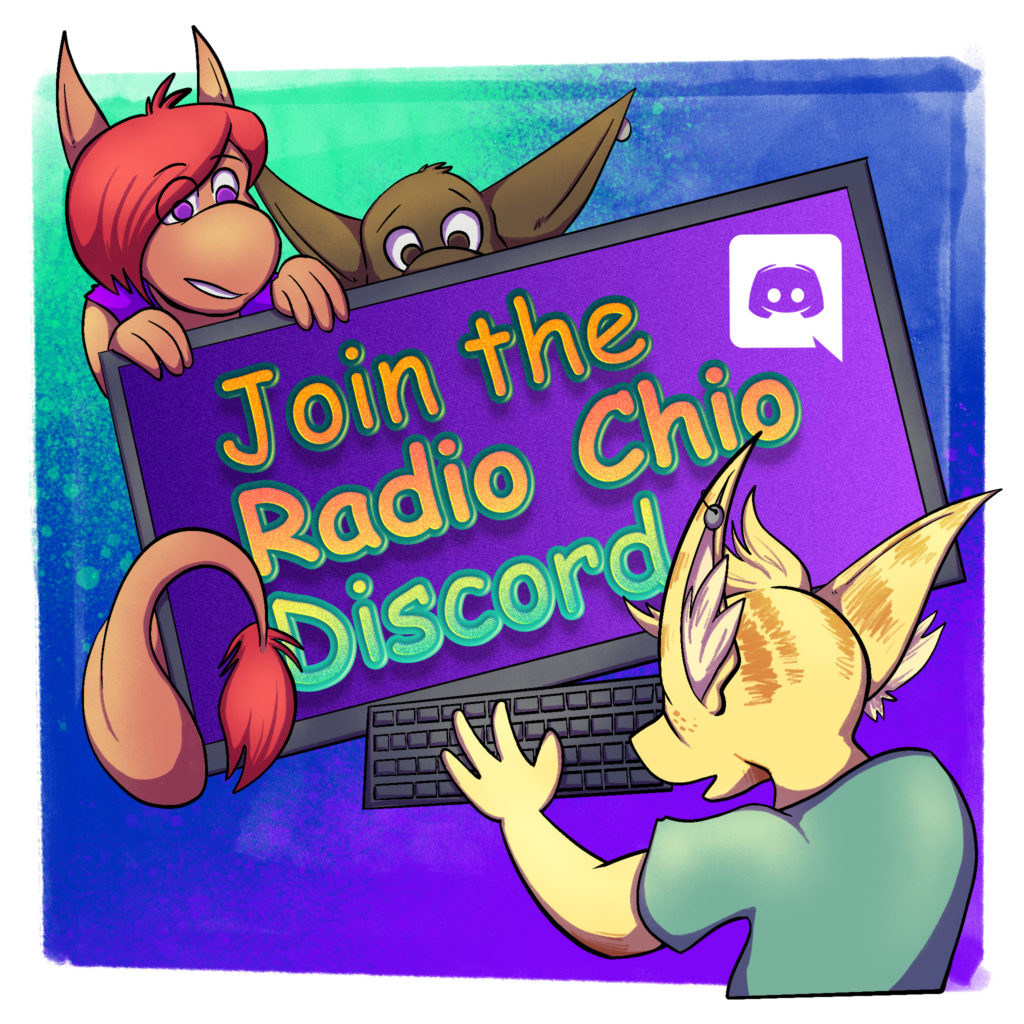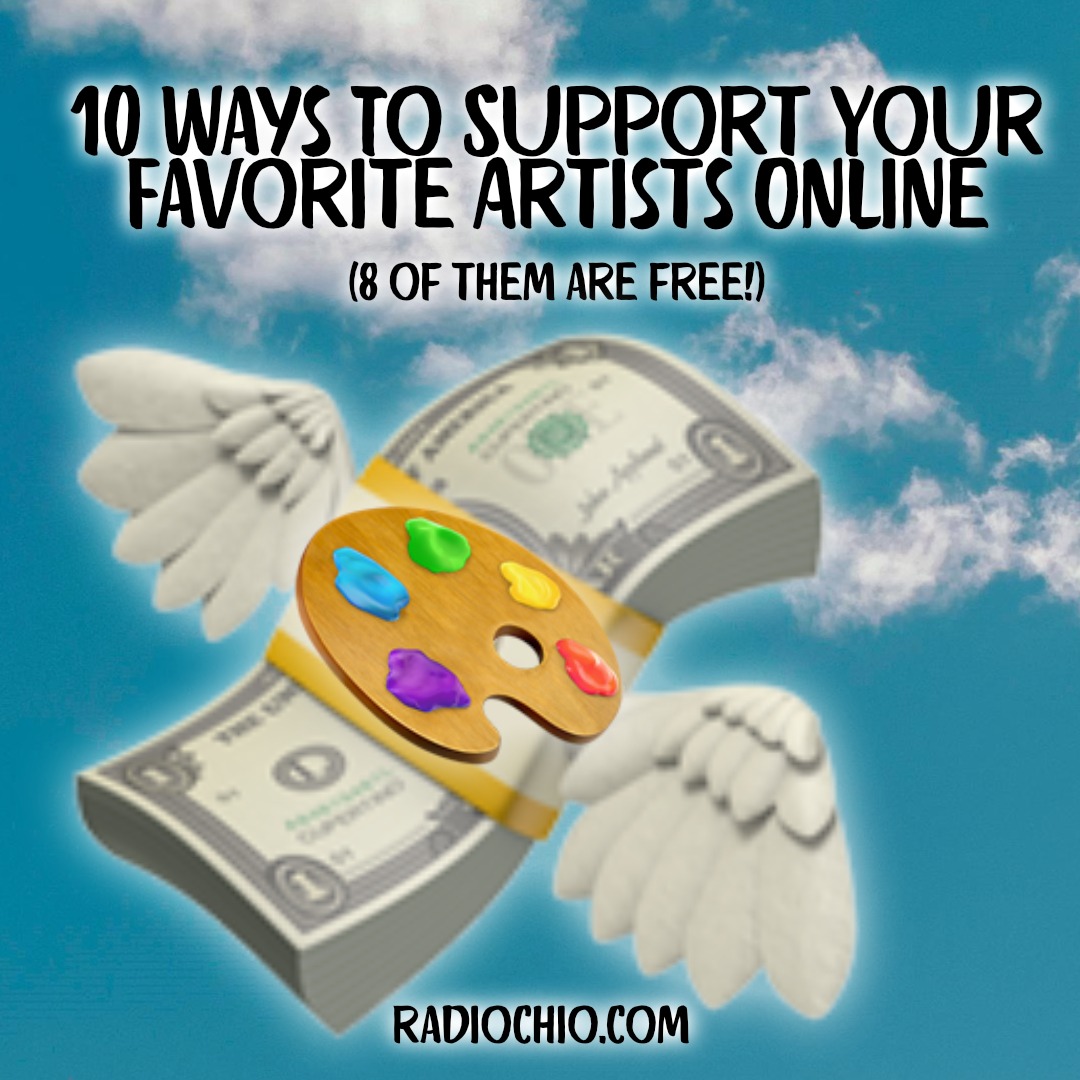Well, I thought I was being silly making a graphic out of emojis but wow do those ever look goofy zoomed in that much. Anyway…
It’s harder than ever to be an artist online in this day and age. It’s a constant battle to be seen in a sea of other content, to make enough money to support at least making the art, if not staying alive in general, and to even get paid in the first place when payment platforms are constantly changing what’s allowed and what’s not, along with changing their basic features and fee structures on a whim. It’s rough out there.
But you, dear reader and art lover, can do more than you think to help your favorite artists, and a lot of it can even be done for free, costing you nothing at all! I’m posting some of the ways that I personally have found to be most helpful for my work, and I recognize that every artist is different, so take this all with a grain of salt. But some tips are universal, and I can guarantee that every artist you support will be thankful for your efforts and appreciation of their work.
1. Support their subscription sites

Yeah, I know, this is the thing that got me going on this topic in the first place. It seems like Patreon makes one really goofy change per year and makes everyone mad, and rules everywhere change wildly in general depending on what credit card company is dogging any given platform about its creators this week. NSFW content? Even harder. So if an artist links to a Patreon, Ko-Fi, itch.io, Kickstarter campaign, or other funding source, that’s probably one of the most direct ways of helping them. Everyone uses these funds differently, some of it is used for general income and survival, and some of it can fund merch or art-making, depending on the individual artist, but no matter what, this kind of thing puts money directly into the hands of the artist and helps to guarantee that you’ll see more of the comics or other creations you love.
2. Buy their merch
Merch can mean a lot of things in this day and age. It can be everything from stickers and buttons, to physical books and prints, to digital books, to private streams or custom commissions. And that’s the cool thing about supporting artists: you usually get some unique thing in return for your help. On my support sites, I give folks who pledge $5+ per month access to all of my digital books that would otherwise be for sale individually. I’ve also got a bunch of print on demand merch that usually makes me a buck or two every month. But the point is, even these little things add up and put money in the pocket of your favorite creator.
3. Follow their social media (and interact with it!)
All right, this one can be exceptionally fraught these days. If an artist you like is posting on social media, following them is a great first step. It shows them (and other people looking at their follower count) that they’re interesting and worth checking out. While numbers aren’t everything, it’s definitely a morale boost to see it go up. What’s even more of a morale boost is hearing from the audience when they post a new comic page or a new drawing. Knowing that it was seen, enjoyed, and appreciated in some way does a world of good. Better still is if you share that post with your own followers – reblog, repost (as in using the repost function of the site – most artists don’t like it if you just grab the image and post it again yourself because that can make it harder for people to find the original artist!) Interaction can also help posts be more visible on platforms with more stringent algorithms. It shows the algorithm that people are interested in whatever this thing is, and pushes it further to more people in a ripple effect. Algorithms are a pain to fight against, but you can help artists win that battle by boosting, reblogging, and replying. Show those robots who’s boss. All of this probably makes most creators sound like raging egotists, and some of those probably do exist, but mostly it’s more like watering a little plant that needs some encouragement and hydration to grow. Just, the hydration comes in the form of nice comments and shares. You get what I’m saying.
In this day and age, it can be difficult to figure out who is posting where anymore, but I’ve personally found that Bluesky seems to have the most staying power of all the newer platforms I’ve tried in the past year or so. The vast majority of artists I was following on other sites are there now, and there are quite a lot of nice features. Custom feeds take the place of the algorithm, and actually let you see things you’re interested in seeing. The art and comics community is growing every day, and just needs more audience to make it sustainable long-term. If you aren’t yet on Bluesky and want to give it a try, you can join using my Starter Pack so you’ll automatically be following me and a bunch of other creators I’ve curated to make your new experience fun and interesting! Use this link to join: https://go.bsky.app/6bkkLyZ

Of course, who knows what’s going to happen month to month these days, so making sure you bookmark your favorite artists’ websites is a good way to make sure you never lose track of them. Then again, there are two more great options for that which are my next two points below.
4. Use RSS for their websites if it’s available
RSS is a really useful and not-well-known-enough feature that lets you keep track of your favorite artists and websites. Most (but not all) websites automatically have RSS feeds available. If you know how to use social media or save a bookmark, it’s not much more difficult to use than that. I wrote a post on it a while back, and there are other good explainer posts by Kiriska and Jay Pawlik that can help you get it set up on your device. RSS is sort of like having your own personal feed of just website updates. It’s always in chronological order, and you always get it when there’s a fresh new post. RSS unfortunately fell out of fashion when Google killed Google Reader, but there are a lot of up and coming new reader apps and sites, in addition to old open source favorites that have been around for ages.
My current favorite reader app is Omnivore, which I discovered recently. It works on mobile devices as well as through a web interface, and it’s free to use. You can add RSS feeds to it and get notified when there’s new stuff to read, and you can also save individual posts or articles that you want to come back and read later. I use this feature because when I’m reading books I tend to highlight and make notes like a fiend, and this lets me do the same thing with web articles. Finding out that RSS was a feature was an unexpected delight. But, there are many, many apps and readers out there – there’s bound to be something that fits your needs and use habits!
How does this help artists? It lets them show off the things they really want you to see on their website, in the way they were intended to be seen or read. They also won’t get lost in the shuffle of social media, and you don’t have to remember to come back and check a bookmark. RSS stands for really simple syndication, and that’s the truth. It’s really, really simple.
5. Sign up for their newsletters
Not every artist has a newsletter, but a lot do, these days. Signing up for a newsletter is easy, generally costs nothing (unless it’s through a subscription site sometimes) and helps an artist gauge their audience’s interest. Who is interested enough to directly follow them? How many people? Sometimes it’s hard to get an accurate read on audience size and interest, so this is one way to help show creators you love that you love their work: you love it so much that you want to get it right in your inbox when they’re ready to tell you all about it. One of the nice things about newsletters is that depending on the style, it’s sometimes like receiving a little personal letter from someone. A lot of folks talk a bit about what they’re working on, what they’re doing, how their life is going, and so on. It feels a bit more personal than other types of notifications, and it’s kind of pleasant. I use my newsletter as a cross between a little update about what’s going on in my world lately, what new things I’ve made, what merch of mine is on sale, and what’s going on in the community.
Subscribe to the Radio Chio newsletter!
6. Once you’ve done steps 4 and 5, share it with friends.
Word of mouth is truly one of the best ways to help spread the word about artists and creators and help them get out there. Chances are, if you like something, you probably have at least a couple of friends with similar interests, right? Pass along a link to something cool your favorite artist has made, or forward their newsletter to a friend who might find it interesting! It’s super difficult to find readers in a specific niche, especially in an area like webcomics, so if you know someone who might also enjoy a creator’s work that you already love, you’re doing a huge favor to the creator by sending them to a friend. There’s a chance that your friend will love them, too, and continue to get the word out, or support the creator in other ways. It seems obvious, but grabbing a link to a comic page, art portfolio, or other content and sharing it via whatever social media you use helps to reach new people who might never see it otherwise. Audience building is tricky work, but it definitely helps if you hype up your favorites.
7. What else are they making? Follow that, too.
Does one of your favorite creators also make Youtube videos, TikToks, or post to sites like Webtoons and Tapas? Do they stream on Twitch or other platforms? A lot of these sites specifically reward creators for higher subscriber counts. This means they’ll literally get paid for making the stuff they already love making in some cases. It costs you nothing other than a minute or two to make an account if you don’t already have one and hit the follow button, and getting their numbers up helps show the platform that their content is well-received. Sometimes this comes in the form of an ad revenue share, or a direct payment based on views, but in any case, it helps!
8. Request their books from your local library.
Okay, this one requires a few steps, and I’m not totally sure about the process outside of how it works in most of the US, but you can request books through your local library, and they will buy it, and usually you get first dibs on it if they do. The vast majority of authors and creators love this, because it’s a free and easy way to get their work in front of new eyes, and since the library is buying at least one copy (often more than one copy, especially if it’s a popular title) they get paid for it. And, when those copies are worn out from circulation, they often buy more new copies. Libraries are major book buyers, and you can work that to your advantage if your favorite creator has a book out. There may be some caveats if it’s a small press or self-published title, but that depends on the individual library. Again, I’m no expert, but I’ve also heard that at least in Canada (and possibly other countries) authors are paid again when their books are checked out of the library. So, bonus if you live in one of those places!
As far as donating copies of books, that can be more challenging. Not all libraries accept donations that will end up on the shelves. These books can frequently end up in the book sale pile, or worse, trashed. Why? Because they often don’t fit the needs of the library’s collection. That’s why the best way to get a book into the library is to request it. By asking, you’re demonstrating an interest of the public at large, and librarians always want to be able to pull in more patrons by keeping the collection useful, modern, and relevant. Requesting a book shows that one, if not more, people are genuinely interested in reading this item, and more people might come in to check it (and other books) out.
9. Join their community.
Having a community is more important than you’d believe to keeping things like a webcomic alive. Not only does it provide much-needed motivation for the creator to know their work is being read and enjoyed, but you can benefit from it, too. If you’re looking for like-minded people to hang out with online, that’s one way to find them. As if I need to put this out there in this day and age, but a lot of creators either run or are part of fan-run Discord or Telegram servers, which are only as active as the community around them. (Mine’s a little sleepy…) But more active servers often run group activities and do stuff together, including but not limited to, creating memes of the webcomic the server is for. Stuff like this can help them reach new people because it naturally makes them curious about where it came from and who these weird characters are. It’s just another way of helping get the word out and making your favorite comic or artist more visible to the rest of the world.

10. Tell them how much you enjoy what they do.
Look, okay, I get that I’ve kind of implied this already in other bullet points on this list, but I can’t explain well enough how much it means to hear a nice word about whatever you’re making now and again. I keep a secret folder of nice comments I’ve received so when I’m feeling down about my work, I can remind myself that people are interested in it and do like what I make and I’m not the world’s biggest failure and… you see where I’m going with this. As long as you’re not like, sending creepy messages and stalking your favorite creator, they’re probably really going to appreciate hearing what you liked about the latest thing they made. That’s why they shared it online in the first place, and it can be hard to keep going sometimes when you feel like you’re throwing your work into an echoing void. A little kindness goes a long, long way, and knowing that readers have resonated with your work can be like a a rope thrown down a deep hole to pull you back up.
11. (Bonus!) Sign up for their Backerkit/Zoop/Kickstarter Projects-to-be!
This one didn’t hit me until I was almost done writing all this, but since one of the biggest ways lots of creative projects (especially comics) get made these days is through crowdfunding, it seemed important to share this one, too.
In a lot of cases, creators using sites like Backerkit and Zoop need to collect emails of prospective backers to help demonstrate that their project is viable. If you’re considering supporting your favorite artist’s new graphic novel or other project, you should add your email to their list. As much as we all grumble about it, numbers matter (sometimes). Pre-launch numbers show the creator how many people are actually interested, the site hosting them that the concept floats with the audience, and can also get even more backers on board by proving that you won’t be the only one who signs up. It’s an important snowball effect that can make a project successful even before it’s officially started.
Of course, I wouldn’t suggest signing up if you have no intention of backing just to inflate the numbers. That could actually hurt the creator in the long run, if people falsely claim interest and then don’t make good on it. Projects like this only become real with proper funding, and while showing interest helps, it’s just one step toward success in the long run, but it’s one you can contribute to if you have genuine interest!
Thank you for reading!
Thank you so much for reading this ramble of an article, and I hope I’ve shared an idea or two you haven’t thought of before.
If you’ve enjoyed this, please check out my own Patreon and Ko-Fi which are linked from the Chio Club! Or, come and join us on the Radio Chio Discord!


